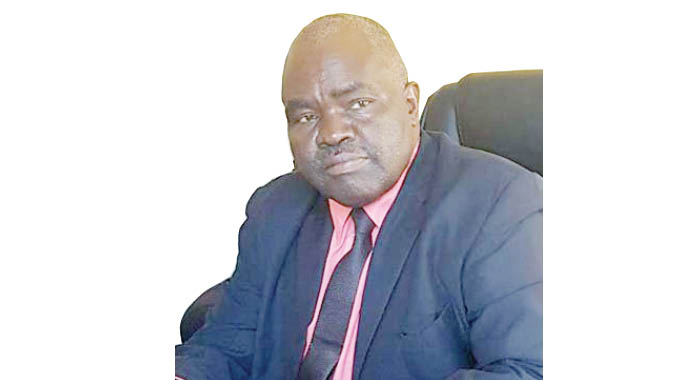How CSR initiatives can eliminate ghost towns

Gibson Mhaka
A scene of utter desperation, poverty and misery greets one visiting Kamativi Mine in Matabeleland North province, once the biggest underground tin mine in Africa.
It closed about 20 years ago on the back of falling global tin prices, rendering close to 2 000 people unemployed. Kamativi Mine is now a long forgotten human settlement, a ghost town with ex-workers wallowing in abject poverty. Since the mine was the main source of income for many in the area, its closure led to the deterioration of everything in its surroundings.
In order to support their families, many former mine workers, who remain occupants of the mine’s houses, have since turned to fishing and subsistence farming.
A former worker at the mine, Mr Abel Mudenda, said life has been tough since Kamativi closed.
“We no longer have decent livelihoods; we’re even struggling to send our children to school. Life is now difficult here. We live from hand to mouth. You won’t believe that this place which was once bustling at the heart of the community with good infrastructure is now a target for vandals and a shadow of its former self.
“All the buildings have been vandalised, with all electrical installations, tubs, sinks, toilet systems and window frames having been stripped,” he said, pointing at the mine club where senior managers used to relax after work but is now a goat pen.
Kamativi is not the only mining town which has become a ghost town. Across the country are other mining towns that once had a moment of glory but have since fizzled out.
These include Mvuma, Lalapanzi, Mashava and Mhangura. In Kadoma, Eiffel Flats village which relied on the now closed Rio Tinto run gold mine, is also now derelict.
Their ruined state is a textbook case on how a general lack of understanding among mining companies has far reaching consequences on the communities they operate from.
While towns like Zvishavane and Shurugwi have since found a second life courtesy of Mimosa Mining Company and Unki Mine, many others have not.
Since the mining sector can be a driver of other sectors of the economy such as agriculture, investing in those sectors should be promoted so that if the resources are exhausted, then the employees have somewhere to sustain their livelihoods.
According to mining and development experts, local communities that live near mine sites have legitimate expectations that mining companies should not only mitigate the negative environmental and social impact of their activities, but should also take actions to promote local development so that there is continuity long after exhaustion of the minerals.
Mining companies should note that the communities affected by their operations need to have basic services like water, health care, electricity and sanitation.
This calls for mining companies to accept these expectations and seek to address them as part of their corporate social responsibility (CSR) initiatives.
In 2011, Government effected the indigenisation and economic empowerment programme, one of whose facets were community share ownership trust/schemes (CSOT/S) aimed at ensuring that communities have shares in companies that exploit natural resources in their areas and use the proceeds from the shares to fund development projects in their respective areas.
CSOT/S were introduced after a realisation that local communities, whose natural resources are being exploited, must have a say through guaranteed shareholding in the companies operating in their areas. This is because those communities bear the environmental, social and economic costs of extraction.
Although some CSOT/S failed to live up to expectations, others have made positive changes to the lives of beneficiaries.
Zimplats is one such company which has made a significant impact in the Mhondoro-Ngezi, Chegutu and Zvimba areas.
Speaking during a media tour of the platinum company’s Bimha Mine in Ngezi recently, Zimplats head of corporate affairs Mrs Busi Chindove said in support of Zimbabwe’s industrialisation thrust and to promote local development so that there is continuity long after exhaustion of the minerals, in 2013 Zimplats embarked on a Local Enterprise Development Programme (LEDs) in which the company developed indigenous suppliers who are geographically located around its mining and processing operations.
“As Zimplats, we’re committed to developing communities where we’re operating from and through our structured LEDs programme, we’ve effectively partnered with at least 20 local companies including Turf Brick Moulding Company, Central African Forge, Allied Engineering, Telstone Trading and Dostaro Investments.
“We’re assisting them financially and technically to set up their operations and then we purchase their goods and services at competitive rates for our business operations. We believe these companies will continue operating even after we stop our mining operations,” she said.
Mrs Chindove said through distributional CSR activities, the platinum producer has also managed to address health, educational, employment, water and sanitation needs of the people in Mhondoro-Ngezi, Chegutu and Zvimba areas.
“As part of our infrastructural development programmes, we’ve also constructed Chitsuwa Dam, police stations, football and netball stadiums, classroom blocks, boarding facilities, science labs and other school infrastructure in Mhondoro-Ngezi District as well as installation of fibre optic network between Ngezi and Selous.
“We’ve also constructed a clinic and refurbished Kadoma Hospital, provided medical equipment to Chinhoyi Provincial Hospital and Chegutu District Hospital and donated ambulances to various medical institutions in Mhondoro-Ngezi and Chegutu Districts,” said Mrs Chindove.
As part of their CSR initiatives, and to reduce the risk of the ghost town phenomenon or economic downturn when the mining ends, other platinum miners, Mimosa Mining Company and Unki Mine, are also playing critical roles in the country’s education and health sectors by adopting wards at hospitals, upgrading infrastructural facilities and funding development projects in the areas they are operating from.
There is no doubt that such investments ensure sustainability.
To ensure that there is sustainability after the end of mining activities, senior researcher at the Labour and Economic Development Research Institute of Zimbabwe, Mr Prosper Chitambira said Government must establish a sovereign wealth fund like most countries with natural resource endowments have done.
“To reduce the risk of economic downturn when the mining ends, the Government must establish a sovereign wealth fund like most countries with natural resource endowments have done.
“Profits realised from such funds can be used to diversify the economy as well as ensuring the benefits of natural resources endowments are shared with future generations,” suggested Mr Chitambira.
From his observation, it is imperative that mining companies reassess their CSR programmes to ensure that they foster a continuous, positive relationship with surrounding communities.
Mining expert and University of Zimbabwe chairperson of the Institute of Mining Research Mr Lyman Mlambo said the reason why ghost towns develop after depletion of mineral deposits is that there was never any attempt to convert the comparative advantage the community had (in terms of the mineral deposit) into a competitive advantage (which is beyond the mere dependence on a depleting resource).
“The point is that a mining community or mining town needs to leverage on the mineral to strengthen and diversify its local economy while the mineral is still extant.
“The community needs to use minerals to diversify and upgrade its productive base both of physical goods and services to extricate itself from the narrow mining economy which is risky in the long-term. That is possible when we develop local seminal mining economic linkages which would transform the community using mining as an anchor,” he said.
Mr Mlambo said these linkages could be: upstream (equipment and materials supply industries initially targeting the needs of the people as the market) or downstream linkages including mineral beneficiation (development of a refinery to refine specific mineral being mined).
“Value addition factories should develop in the local town that uses the mineral to manufacture end-user products, side-stream linkages (including development of road, railway, power, water and other infrastructures meant initially to service the mine, but could be subsequently densified by being deliberately linked to non-mineral economic hubs like local agriculture, agro-processing, tourism facilities),” he said.
Fiscal linkages related to opportunities for both local and central governments to finance development programmes in the local community using the taxes from the mine and scientific and technical services, he said, could be used deliberately as upstream knowledge linkages specifically to address the mine’s needs initially, for example establishment of a mining school whose scope could later be expanded beyond mining to cater for a diversified and expanding the productive base in the community.
Mr Mlambo said the transformation of the mining community or town can be achieved through deliberate incentives by government (taxes, designation of the area as an economic zone), deliberate government development programmes (using royalty and tax revenue from the mine), legislation on local content and local procurement (which essentially is LEDs).
Given the above observations, it is clear that mining, which has always played a significant role in the urbanisation of Zimbabwe and as one of the critical sectors that anchor the economy should have a correlation with other sectors of the economy to drive development and reduce poverty in communities where mining companies are operating from so that there is continuity long after depletion of mineral resources.












Comments